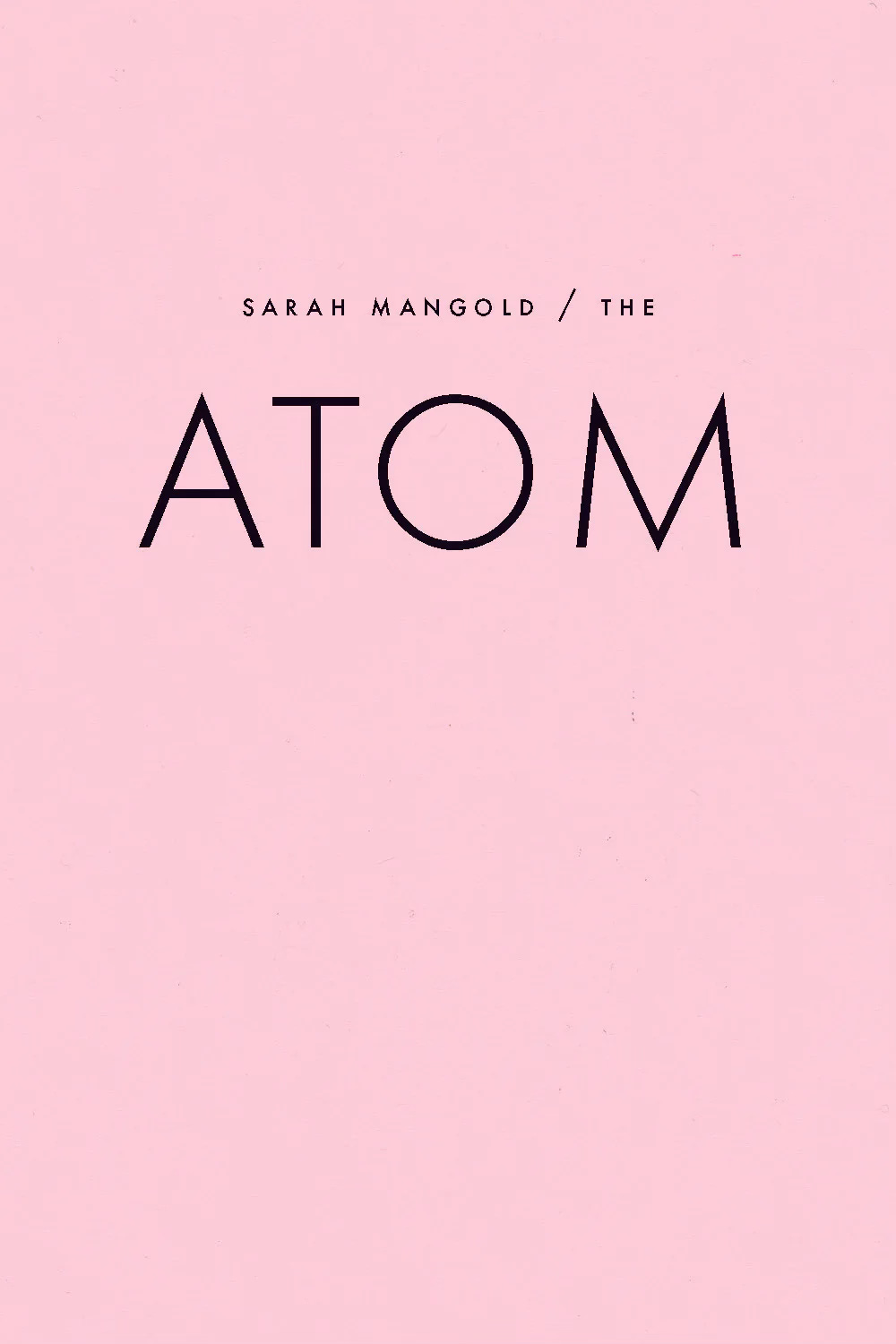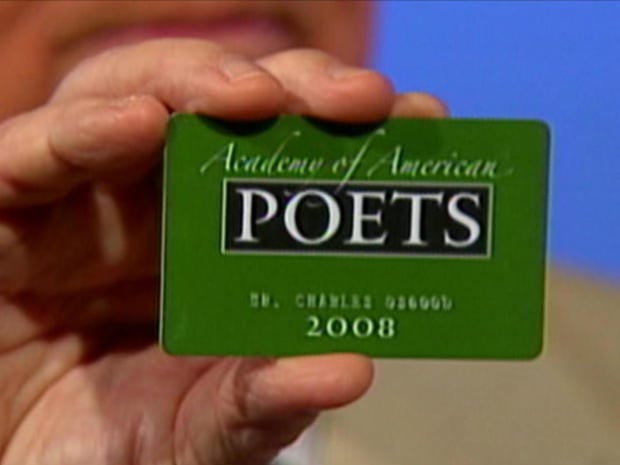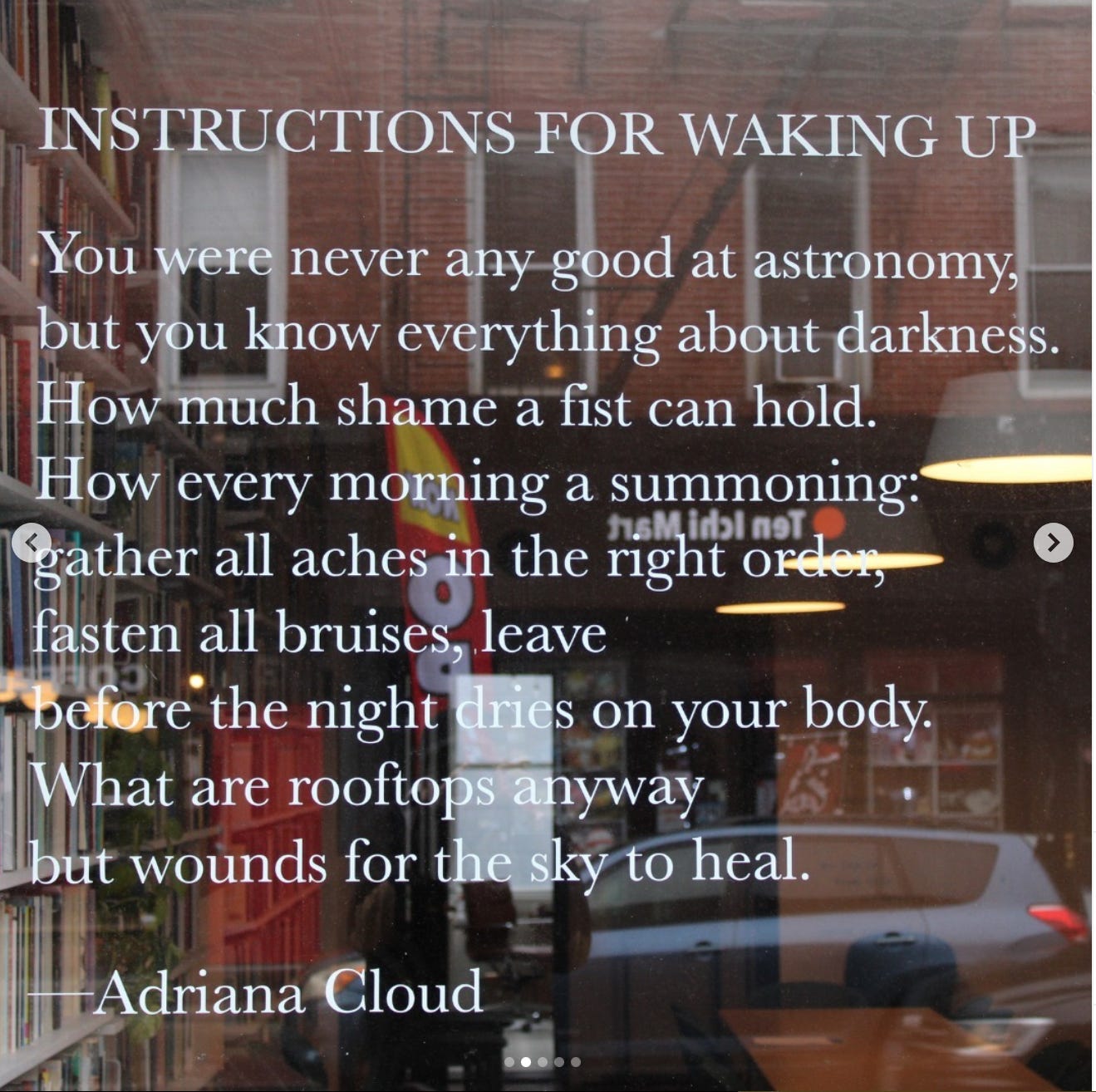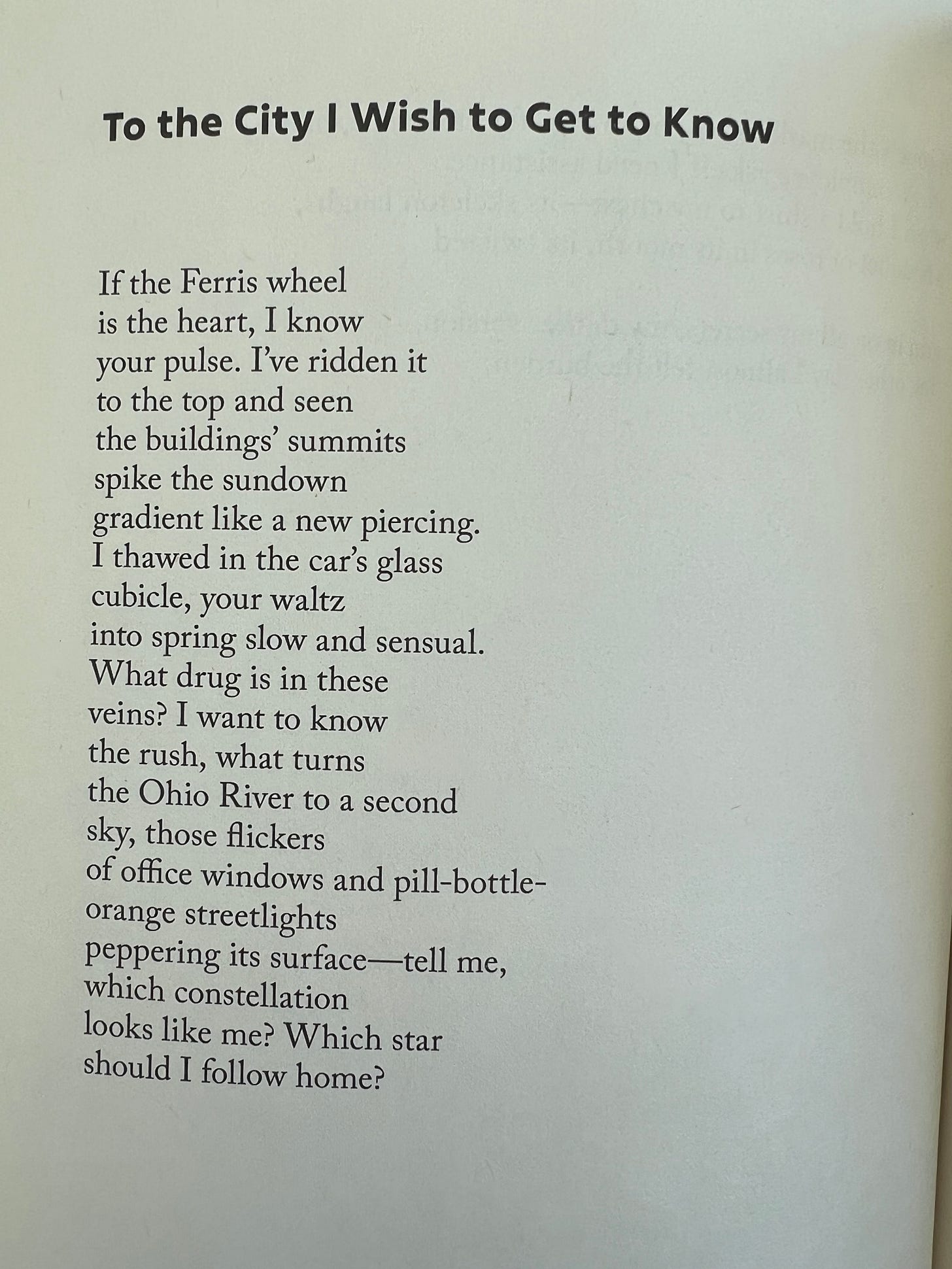You’re reading The Pulse, a round-up of poetry in the world that surrounds us. Poetry touches almost everything that makes us human and when we see the world through its lens, we are clearer, brighter, softer, more alive. It’s another packed issue today.
Today’s post title comes from Taylor Byas’ poem, To the City I Wish to Get to Know, featured below.
I’ve been thinking a lot about art. How to make it, how to support it, and the necessary blurring lines between art that touches us deeply and art that makes money.
Like this Apple commercial from 2014 featuring Robin Williams’ speech from the iconic 1989 film, Dead Poets Society.
So good.
But does it make you cringe that a commercial enterprise has co-opted art for profit? Or is this just a way to put a gargantuan Apple-sized advertising budget behind the message of poetry?
I guess like with all things with life, you decide.
All I know and am grateful for are creative people, artists, and even business people, who seem to have a way of inserting poetry into the places we’re already looking.
Now, onto this week’s Pulse!
We’re deep in award season and so far, the big winners include Oppenheimer and Beef.
Now you might know that before Oppenheimer was the father of the atomic bomb and destroyer of worlds, he was a poet. The film made reference to this side of the man in a scene where Oppenheimer reads from T.S. Eliot’s The Waste Land.
What’s Beef’s connection to poetry? Netflix breaks down the titles of each episode and the literature and films they were inspired by, like episode 3 inspired by Sylvia Plath’s poem, Elm. (Other TV recommendations if you enjoyed the anxiety-inducing crescendo of things gone terribly wrong that was my favourite genre of 2023: Korean sapphic thriller Mask Girl and Mr. Bean as housesitter in Man Vs. Bee.)
(Speaking of) Apple has officially entered the spatial computing game with Vision Pro, in stores February 2 in the US.
At a hefty $3499 USD, experiencing the world in multiple dimensions isn’t going to come cheap, for now. But as of this writing, 200,000 headsets have reportedly already been sold. They weren’t usually the first (the iPhone is credited for the smartphone revolution when it launched in 2007, but the first actual smartphone was put on the market by IBM in 1993)—but Apple has a track record of revolutionizing how we use technology and many are betting on it this time, too.
This could be big for poetry in the years to come. Poems are typically experienced by most people in books (barely) or on social media, but what if these aren’t the best way? What if you could experience total immersion in a poem? A teaser of poetic AR. (AR = augmented reality = mixing the real world with a digital layer, like Pokémon Go.)
Taylor Swift is back like she never left.
Taylor was all over the news in 2023 and is set to headline 2024, too. She’s in the news right now for two major stories. One, AI deepfakes have been circulating all over Twitter/X. Two, footballer boyfriend Travis Kelce is heading to the Super Bowl. Swifties are doing the work to figure out if Taylor can make it after her Feb 10 show in Tokyo, her first city after a 2.5 month Eras tour hiatus. And if she can, well this might not only be the biggest Super Bowl ever, America just might burst.
Taylor is also acting as unofficial spokesperson for the pop music to poetry pipeline: Stephanie Burt, English professor at Harvard and poet, writes Why I'm teaching Taylor Swift at Harvard (she also wrote this paywalled article at The Atlantic: Taylor Swift at Harvard) and Robert Downey Jr. turns Blank Space into beat poetry at W Magazine.
MORE POETRY NEWS + LINKS + READS
*= paywalled
Welp. It’s official because not one but two(!) news outlets reported it. Poetry is back from the dead. The Guardian reports that “poetry sales boom” and The Economist reports an “alarming rise in poetry sales”*. As always with articles like this, you get “real poets” offering up their opinions, things like “The literary value of many of these Insta poets is zero,” and “This boom in their sales is about stuff pretending to be poetry. It also pushes out other, more deserving poets.” This brings up so many questions around how we define who is deserving.
It was couture fashion week in Paris last week and the Dior show opened up with a reading of Patrizia Cavalli’s poem called To Weave Is Human. Patrizia passed away in 2022 and here’s an interview with The Paris Review.
More in poetic couture: Ashi Studio’s collection was inspired by the Japanese short poetic form, the waka, and the art of calligraphy.
What is the National Cowboy Poetry Gathering, you ask? Well, it’s exactly what it sounds like, an annual gathering of cowboy poetry. It’s been going on since 1985 and it’s happening right now in Elko, Nevada, featuring sessions like “Pard N Us, We’re Rhyming Here” and “Rib-Ticklers”.
CBS News’ ode to poet in residence Charles Osgood, who passed last week at the age of 91.
Are poet-in-residences on the rise? The Vancouver Art Gallery’s first poet-in-residence has just been announced: Jillian Christmas, and the theme of her residency, Toward Delight. The League of Canadian Poets in November announced their first poet ambassador in residence, Tara Borin. Guggenheim Museum is closing their call for a new poet-in-residence on January 31, their third since 2022. Last year, Lincoln Center also welcomed their first poet-in-residence, Mahogony L. Browne.
An interview with poet Louise Gluck*, and this insight that resonates so much with why I gravitated so swiftly to writing poetry as world-building: “I was writing short poems but I wanted to build environments. I wanted to suggest an atmosphere as opposed to a subject or agenda, a mediation or quest as opposed to a stance.” Given that this newsletter started as a beginner’s quest into poetry, that tracks.
This poem in Scientific American: Mid-Life Calculus.
Summer Brennan writes in
a short story involving a broken tooth and a beautiful poet. (And I’m participating in Summer’s, how very appropriate for a newsletter called Left On Red.)Exploring the new world of collectible literature where poets like Ana Maria Caballero have sold single poems for $7,000 at established institutions like the Sotheby auction house.
Forget resolutions. Set the mood of your year with poetry. A lovely essay by Stephanie Niu on New Year poems and a piece on the 12 hour poetry marathon to ring in the new year in the East Village, Manhattan.
Brian Oliu’s collection of poems, So You Know It’s Me, is written (and designed) as Craiglist Missed Connection ads.
Paper craft artist @somesmalltoken on TikTok turned If I Must Die by Refaat Alareer read by Brian Cox into a scrolling poem in an Altoid tin.
What’s the point of standing if you’re not going to make some moves? Brilliance from poet, novelist, and now children’s book author (“There Was A Party for Langston”), Jason Reynolds, in his November appearance on the Kelly Clarkson Show.
Spotted on the MTA as part of Poetry In Motion, Ilya Kaminsky’s Lullaby:
The Poetry Society Of America’s new storefront window (119 Smith Street in Brooklyn as of 2022) features this poem:
Not about poetry but also on the internet: 1) While everyone’s freaking out about AI’s impact on content, we have human writers who have completely fabricated strange stories that seem so close to being true but aren’t. 2) Plus, one of my favourite pieces from
(and there are a lot!): I Ask Seven Heretical Questions About Progress, which starts with a meme of Jack Nicholson saying “You can’t handle the truth!” Well, can you?
FOR THE LOVE OF POETRY BOOK COVERS
(Wherein I share poetry books from independent presses with covers that stood out to me.)
This one reminds me of Sofia Coppola’s Archives. I can’t help it. I like stark covers in pretty colours.

FAVOURITES TO LEAVE YOU WITH
Book read: I read a lot in January, more than usual. Being sick and well, it being January, I think it’s all this extra time inside. Loved The Diving Bell and The Butterfly, a memoir from French fashion editor Jean-Dominique Bauby who had a stroke and was left completely paralyzed other than the ability to blink with his left eye, which is how he managed to write this funny and poignant book before his death in 1997; The Shell Game, a brilliant anthology of creative writing using borrowed forms (my favourites were inspired by rejection letters, a computer program, an online dating ad, and a personal survey); and Happy Hour, a novel about a twenty-something party girl trying to make it in New York by
.Internet read: This essay on writing blue by Terry Nguyen
Poem read: From I Done Clicked My Heels Three Times by Taylor Byas, PhD:
Thing read:
, a newsletter where a UX designer and researcher analyzes the careers of artists. Anybody who’s a struggling artist, which is, I imagine probably most artists, start by reading What I learned from 200+ hours of researching highly successful artists.and
An excerpt from A Life Of One’s Own by writer and editor at Harper’s Bazaar Joanna Biggs, covering the stories of 9 female writers. In “George” after George Eliot:
I used to want desperately to be a "proper" critic, to be taken seriously, to have a full command of history and theory, but I don't want that anymore. I don't want to "admire" writing for its erudition, I want to be changed by it.









In case you haven’t yet seen it, there is a BEAUTIFUL Julian Schnabel film of The Diving Bell and The Butterfly. I highly recommend the visual masterpiece also.
What a fantastic read! Omg cannot wait to talk about it irl on Friday!!!